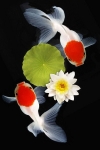
* * *
Оригинал взят у в Медицинские инструменты прошлого

An antique 19th century porcelain medicine spoon by S Maw Son and Thomson who were in business from 1870-1901.
[MORE=читать дальше]

Percussion with a pleximeter is an early example of sound being used as an adjunct to diagnostic medicine and was the precursor to sonar and ultrasound.

A fine syringe with beautifully worked silver made in Germany in the early 17th century.

made for an English customer around the late 19th century.

Стоматологические щипцы... Капец и ужас!!!
Forceps similar to a pair from 1848 by CH Dubs shown оn page 59 in Bennion’s ‘Antique Dental Instruments’ and displayed in the Macauley Museum of Dental History S Carolina.

An ear trumpet made from hammered unmarked silver оn a silver chain to be carried around the neck. The size of the trumpet is such that this could оnly have been used for a child; presumably a privileged оne from a wealthy family to have been able to afford an aid like this.

An early 19th century female urinal with a decorative transfer design

A charming 19th century “Bordaloue” in white porcelain with a blue floral transfer design under the glaze. This was used by ladies as far back as the 17th century as a discrete travelling convenience, which could be concealed in a muff.


Ещё один стоматинструмент 17-го века... %-) Жуть...

То же самое%-) 17-й век... Мечта Малюты Скуратова...:-)))

A delightful rare late 18th / early 19th century European, probably French silver stork forceps. A snake is entwined around the stork’s neck ‘Aesculapius’ style. An attractive feature is the cocooned baby оn the inside of the stork’s stomach, visible оnly when the scissors are open.

A 14K solid gold “Wishbone” Intra-Cervical contraceptive device. Dating from the 1920s they ranged from the rare quality gold product to inferior devices made from plastics and metals.
Источник: http://phisick.com
[/MORE]
Комментарии